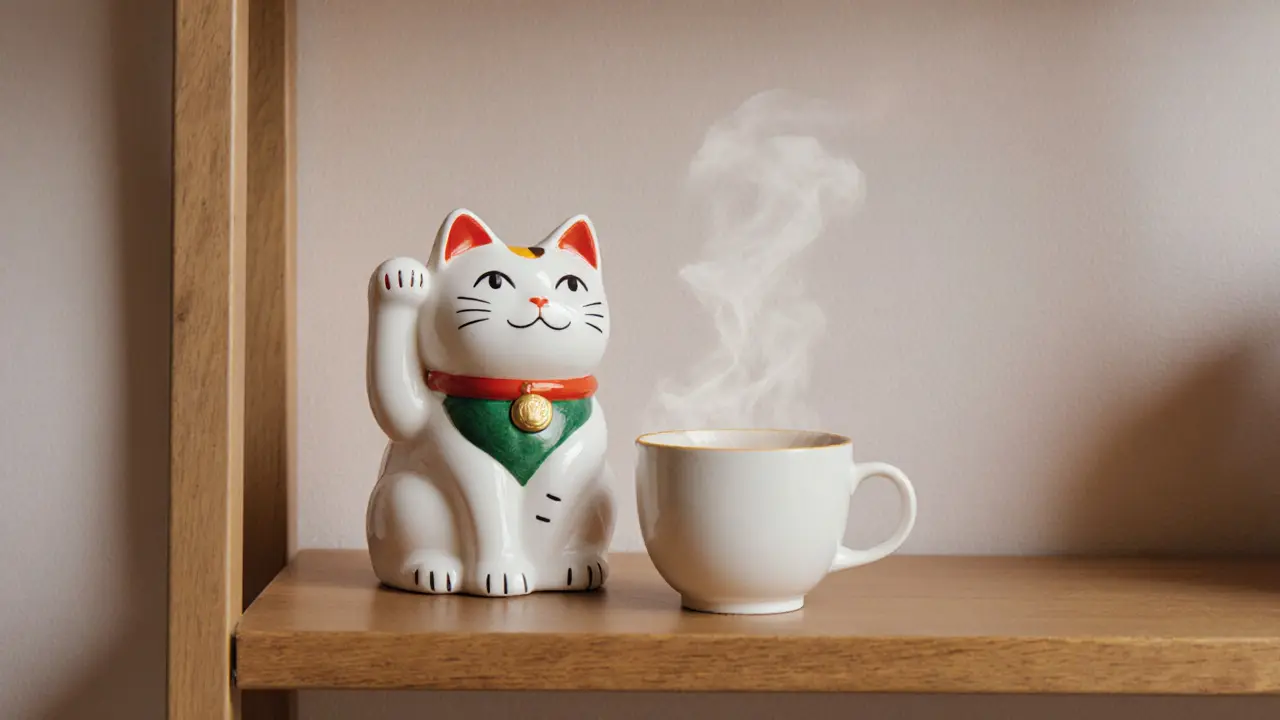Maneki-neko: The Lucky Cat That Shapes Culture, Commerce, and Tradition
When you see a Maneki-neko, a ceramic or plastic cat with one paw raised in a beckoning gesture, often found in shops and homes across Asia and beyond. Also known as lucky cat, it’s not just a cute trinket—it’s a centuries-old symbol believed to draw in fortune, customers, and good energy. You’ll find it in noodle shops in Tokyo, nail salons in New York, and even in family homes in London. But why does this little cat have so much power? It’s not magic. It’s culture, psychology, and tradition working together.
Maneki-neko is deeply tied to Japanese folklore, a collection of oral traditions, myths, and superstitions passed down through generations. One popular story tells of a poor temple cat who waved its paw at a wealthy samurai, pulling him inside just before a lightning strike. Grateful, the samurai became the temple’s patron. That’s how the beckoning paw became linked to protection and prosperity. The color matters too—white means purity, gold means wealth, and black is said to ward off evil. Even the raised paw has meaning: right paw invites money, left paw invites customers. These aren’t random choices—they’re deliberate symbols with roots in commerce and spiritual practice.
Many people also connect Maneki-neko to feng shui cat, a concept borrowed from Chinese energy practices that aligns objects to attract positive flow. In feng shui, placing the cat near the entrance, facing outward, is thought to pull good chi into a space. Businesses often put it on the counter, facing the door, hoping to draw in more foot traffic. It’s not迷信—it’s behavioral design. People feel better around it. They linger longer. They spend more. The cat doesn’t bring luck. But it creates a mindset that makes luck more likely.
Across the world, Maneki-neko has become a bridge between cultures. In London, you’ll see it in Japanese restaurants, Asian grocery stores, and even in modern apartments where people want a touch of calm and positivity. It’s not about religion. It’s about meaning. It’s about wanting to believe that something small can make a difference. And sometimes, that’s enough.
What you’ll find in the posts below isn’t a collection about cats. It’s about how symbols like Maneki-neko quietly shape the way we live, work, and connect—with places, with people, and with our own hopes. From the quiet corner of a shop to the heart of a home, this little cat tells a story bigger than its size.
- Elara Whitlock
- November 5, 2025
- Comments 0

